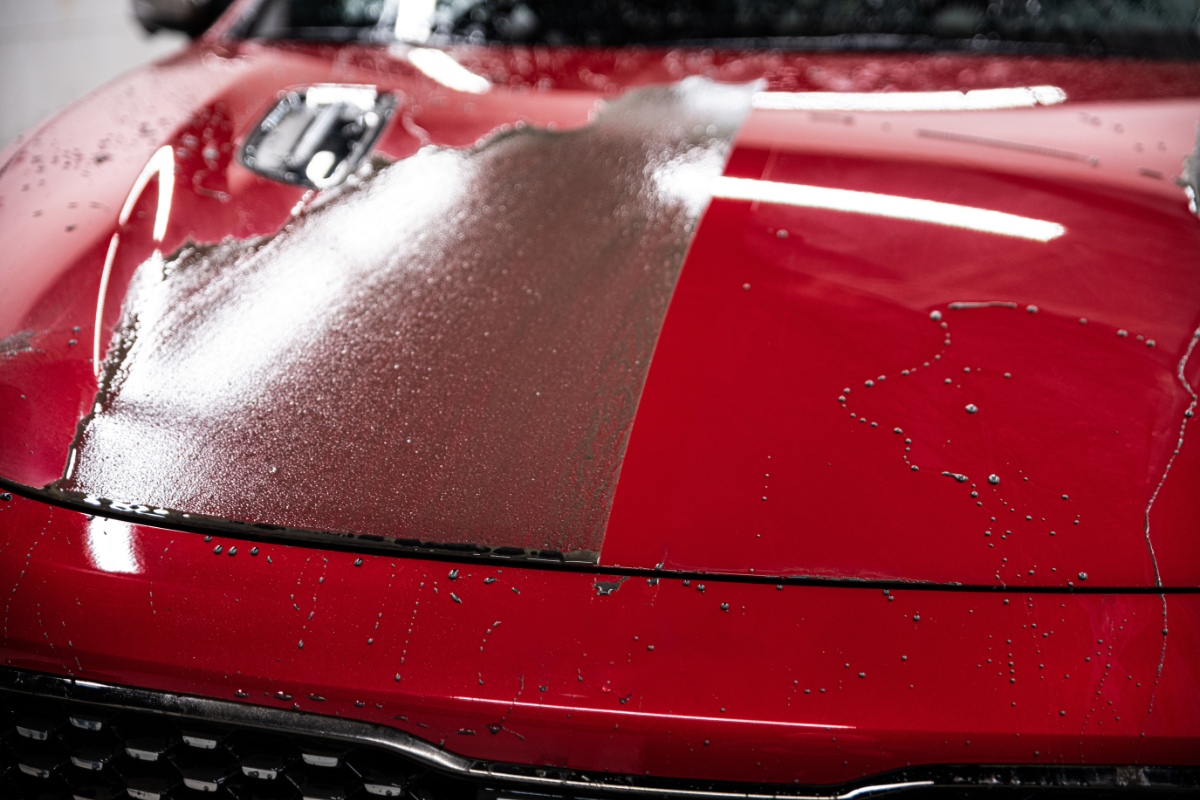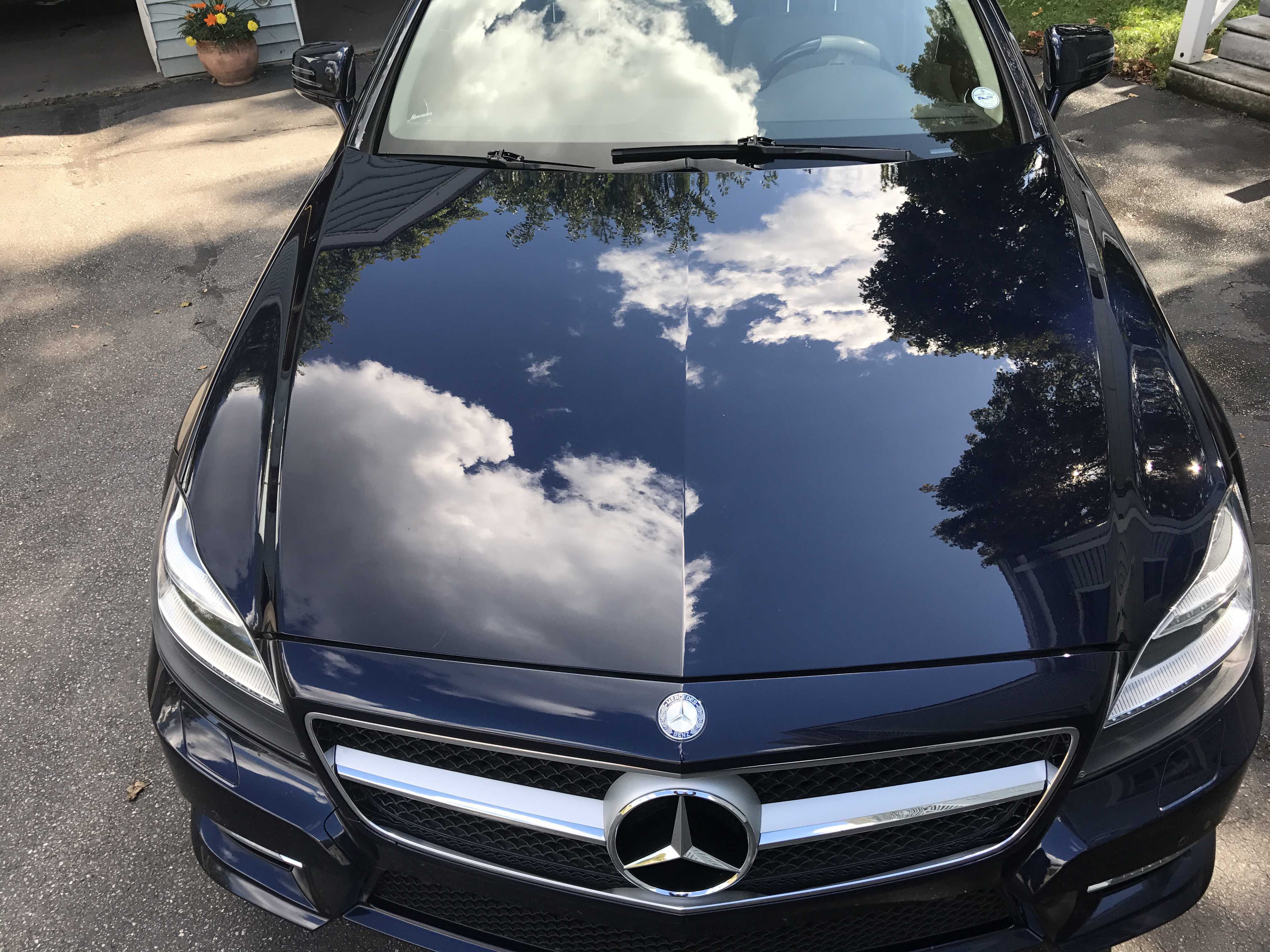Why Ceramic Coating Is the Ultimate Solution for a Perfect Complete
Ceramic finish has become a leading remedy for those seeking a flawless coating for their automobiles, thanks to its remarkable toughness and safety attributes. This advanced liquid polymer not only bonds seamlessly with manufacturing facility paint but likewise supplies a formidable obstacle against usual risks such as scratches, UV rays, and ecological toxins. In addition, its hydrophobic properties streamline maintenance while improving aesthetic allure. Nevertheless, understanding how this innovation compares to standard techniques and discovering its application subtleties can expose a lot more about its worth. What aspects genuinely set ceramic finish apart?
What Is Ceramic Covering?

When applied properly, ceramic coating produces a hydrophobic surface that pushes back water and dust, making it easier to preserve and clean up. Unlike typical waxes or sealants, which commonly supply short-term defense, ceramic layers can last for numerous years, depending upon the product quality and application method. The process of using ceramic layer needs thorough preparation, consisting of thorough cleaning and occasionally repaint correction, to ensure optimal bonding and effectiveness.
Ceramic coverings are not limited to automotive surface areas; they can also be utilized on various materials, including glass, metal, and plastics, giving a functional service for enhancing defense. Generally, ceramic finish stands for a considerable improvement in surface area defense technology, combining both visual and useful benefits for a wide variety of applications.
Benefits of Ceramic Layer
While several surface area security choices exist, the benefits of ceramic finish attract attention as a result of its unique buildings and lasting performance. One of the primary benefits is its remarkable longevity. Ceramic Coating Philadelphia. Unlike typical wax or sealants that need regular reapplication, ceramic finishings supply a resistant layer that can last for a number of years, substantially lowering maintenance efforts
Another noteworthy benefit is enhanced protection against environmental pollutants. Ceramic coverings develop a hydrophobic surface area that drives away water, dirt, and numerous contaminants, making it less complicated to clean. This feature not only protects the lorry's appearance however also reduces the threat of corrosion and oxidation, particularly in rough climate condition.
Additionally, ceramic coverings provide premium resistance to UV rays, stopping fading and degradation of paint with time. This UV security is important for preserving the aesthetic value of automobiles and surface areas subjected to direct sunshine.
Furthermore, the shiny coating achieved with ceramic covering improves the total visual charm, giving surfaces a showroom-quality luster. On the whole, ceramic coverings represent a considerable improvement in surface protection innovation, supplying enduring advantages that accommodate both useful and visual needs.
How It Functions
Understanding the scientific research behind ceramic coverings exposes how they offer such exceptional defense and longevity. At its core, a ceramic coating is a fluid polymer that chemically bonds with the car's factory paint.
The application procedure includes multiple steps, including surface area preparation, which is important to achieving ideal adhesion. When applied, the layer goes through a curing procedure, during which it sets and forms a semi-permanent bond with the paint surface. This bond is what distinguishes ceramic finishes from typical waxes and sealers, supplying a longer-lasting safety barrier that can endure for several years.
Additionally, the density of the finish can enhance its safety top qualities, making certain that it can stand up to extreme conditions. Inevitably, the science of ceramic finishes combines innovative materials with ingenious application strategies to deliver an unmatched degree of protection and visual enhancement for vehicles.
Contrast With Conventional Approaches
The benefits of ceramic coverings become particularly obvious when contrasted to traditional paint security techniques such as sealants and waxes. While waxes supply a short-term sparkle, typically lasting a couple of weeks to a number of months, ceramic coatings offer a durable safety layer that can withstand for numerous years. This sturdiness considerably minimizes the regularity of reapplication, making ceramic finishes a much more affordable service over time.
In addition, typical techniques frequently require substantial prep work and numerous applications to accomplish a satisfactory degree of protection. On the other hand, ceramic coverings bond at a molecular level with the automobile's surface area, producing a robust guard against environmental pollutants like UV rays, acid rainfall, and road salts. This bond improves the automobile's resistance to scratches and swirl marks, which are common with conventional waxes and sealers.
Furthermore, the hydrophobic residential or commercial properties of over at this website ceramic layers repel water and dirt, resulting in easier cleansing and maintenance. In comparison, wax and sealant-treated surfaces can draw in gunk, demanding even more regular cleaning - Ceramic Coating Philadelphia. Overall, ceramic finishes not only supply exceptional defense however additionally supply a much more aesthetically attractive and enduring finish, developing them as the preferred choice for critical car proprietors
Application and Upkeep Tips

Making use of a foam applicator, use the finish in tiny areas, complying with hop over to here the manufacturer's guidelines relating to thickness and overlap. Permit adequate curing time between coats, normally 1 day, to ensure proper bonding. After application, it is critical to stay clear of exposure to water or rough aspects for at the very least a week to permit the finish to fully cure.
For maintenance, clean the car routinely with pH-balanced soaps and stay clear of abrasive materials. Touchless cars and truck laundries are advised to minimize scratching. Furthermore, making use of a ceramic upkeep spray can boost the finish's hydrophobic residential properties and longevity. Regular assessments for any type of indicators of wear will aid keep the finishing's integrity and protect that immaculate finish.
Conclusion
In verdict, ceramic covering arises as a premium choice for attaining a flawless automotive coating. By creating a robust bond with manufacturing facility paint, ceramic finish efficiently shields versus scratches, UV rays, and environmental impurities.
